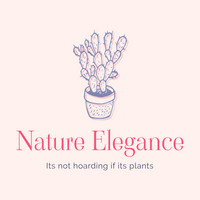Creating Comprehensive Terms and Conditions for Gardening Blogs
- Nature Elegance
- Oct 20
- 4 min read
When running a gardening blog, having clear and comprehensive terms and conditions is essential. These legal statements protect your content, clarify user responsibilities, and help manage expectations. Whether you share gardening tips, plant care guides, or product reviews, well-crafted gardening blog terms ensure your site operates smoothly and professionally.
Why Gardening Blog Terms Are Important
Gardening blogs often attract a diverse audience interested in plants, landscaping, and outdoor living. With this variety comes the need to set clear rules about how visitors can use your content and interact with your site. Here are some key reasons why gardening blog terms matter:
Protect Your Content: Your articles, photos, and videos are your intellectual property. Terms and conditions help prevent unauthorized use or copying.
Limit Liability: Gardening advice can sometimes lead to unexpected results. Terms can clarify that you are not responsible for any damages or losses from following your tips.
Set User Expectations: Define what behavior is acceptable in comments or forums, and explain how you handle user data.
Comply with Legal Requirements: Depending on your location, you may need to disclose information about cookies, data collection, or affiliate links.
For example, if you recommend a specific fertilizer or gardening tool, your terms can clarify that you are not liable if a product does not meet expectations or causes harm.

Key Elements to Include in Gardening Blog Terms
Creating effective gardening blog terms involves covering several important areas. Here’s a breakdown of what to include:
1. Intellectual Property Rights
Clearly state that all content on your blog, including text, images, and videos, is owned by you or licensed to you. Specify that users cannot copy, distribute, or modify your content without permission.
2. User Conduct
Outline acceptable behavior for visitors. For example, prohibit spam, offensive comments, or unauthorized advertising in comment sections or forums.
3. Disclaimers and Liability
Include disclaimers about the accuracy of your gardening advice. Mention that results may vary and that you are not responsible for any damage or injury resulting from the use of your content.
4. Privacy and Data Use
Explain how you collect and use visitor data, such as through cookies or newsletter sign-ups. Link to your privacy policy if you have one.
5. Affiliate Links and Advertising
If you use affiliate links or sponsored content, disclose this clearly to maintain transparency with your audience.
6. Changes to Terms
State that you reserve the right to update your terms and conditions at any time, and explain how users will be notified.
By including these elements, you create a solid foundation that protects both you and your readers.

How to structure Terms and Conditions?
Structuring your gardening blog terms and conditions in a clear, logical way helps readers understand their rights and responsibilities. Here’s a recommended structure:
Introduction
Briefly explain the purpose of the terms and conditions and the scope of their application.
Intellectual Property
Detail ownership of content and restrictions on use.
User Responsibilities
Define acceptable behavior and prohibited actions.
Disclaimers and Limitation of Liability
Clarify the limits of your responsibility regarding the use of your content.
Privacy and Data Collection
Summarize how user data is handled and link to your privacy policy.
Affiliate Links and Advertising
Disclose any commercial relationships or sponsored content.
Modifications to Terms
Explain how and when terms may change.
Contact Information
Provide a way for users to reach you with questions or concerns.
Using numbered sections and clear headings improves readability. You can also use bullet points for lists and bold key phrases to highlight important information.

Tips for Writing Clear and Effective Gardening Blog Terms
Writing legal text can be challenging, but keeping your terms simple and straightforward helps your readers understand them better. Here are some tips:
Use Plain Language: Avoid legal jargon. Write as if you are explaining the terms to a friend.
Be Specific: Give concrete examples where possible, such as what constitutes prohibited behavior.
Keep It Concise: Long blocks of text can be overwhelming. Break content into short paragraphs and sections.
Make It Accessible: Place a link to your terms in the footer of your blog or during sign-up processes.
Review Regularly: Laws and your blog’s features may change. Update your terms accordingly.
If you want more detailed advice, consider consulting a terms and conditions guide that specializes in online content.
Maintaining Trust Through Transparent Terms
Transparent terms and conditions build trust with your audience. When readers know what to expect and how their data is handled, they feel more comfortable engaging with your content. This trust can lead to higher engagement, repeat visits, and even support through affiliate purchases or donations.
Remember to communicate any updates clearly and provide easy access to your terms at all times. This openness shows professionalism and respect for your community.
By investing time in creating comprehensive gardening blog terms, you protect your work and foster a positive environment for your readers. Clear terms help you manage risks and maintain a trustworthy online presence, allowing you to focus on sharing your passion for gardening.




Comments